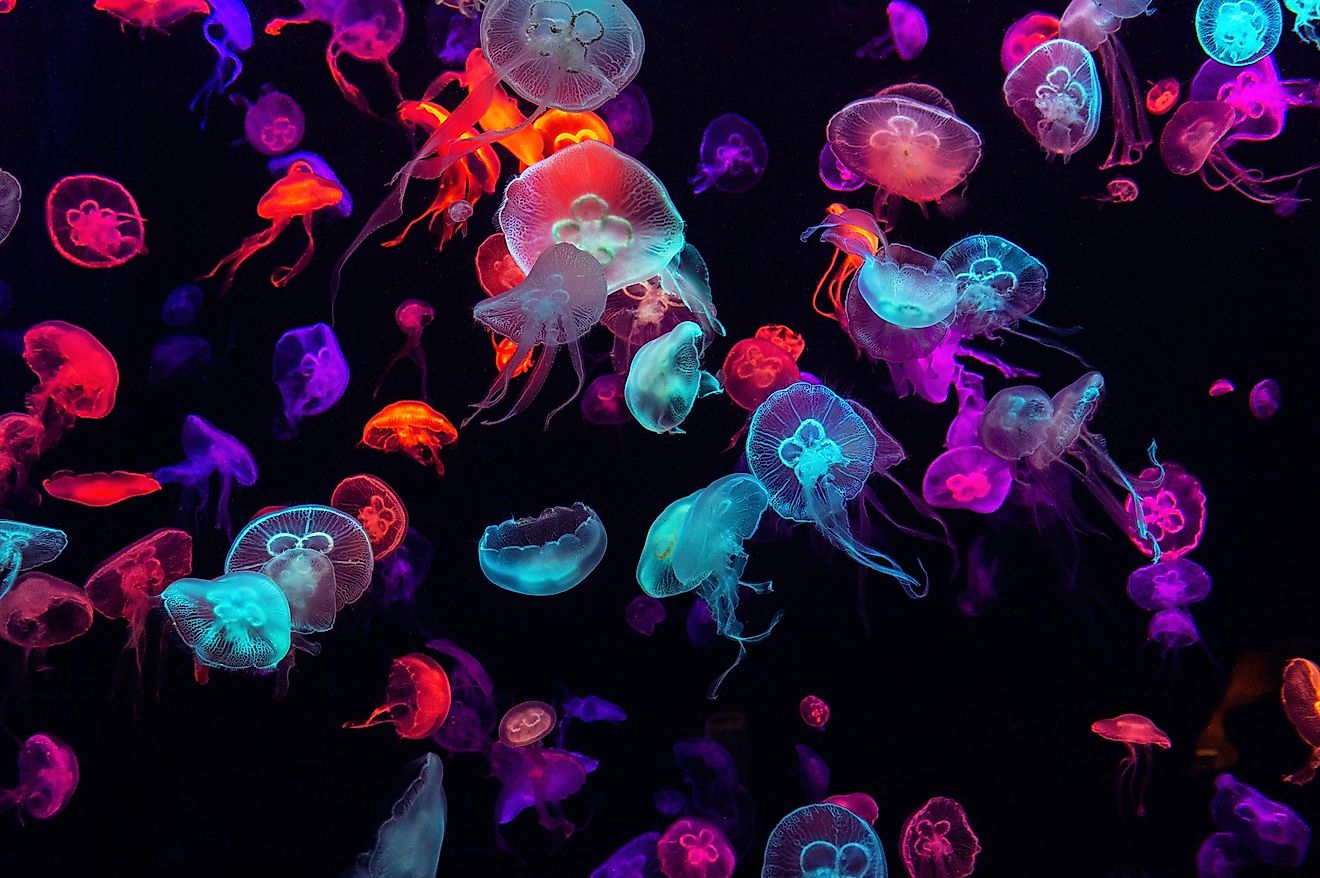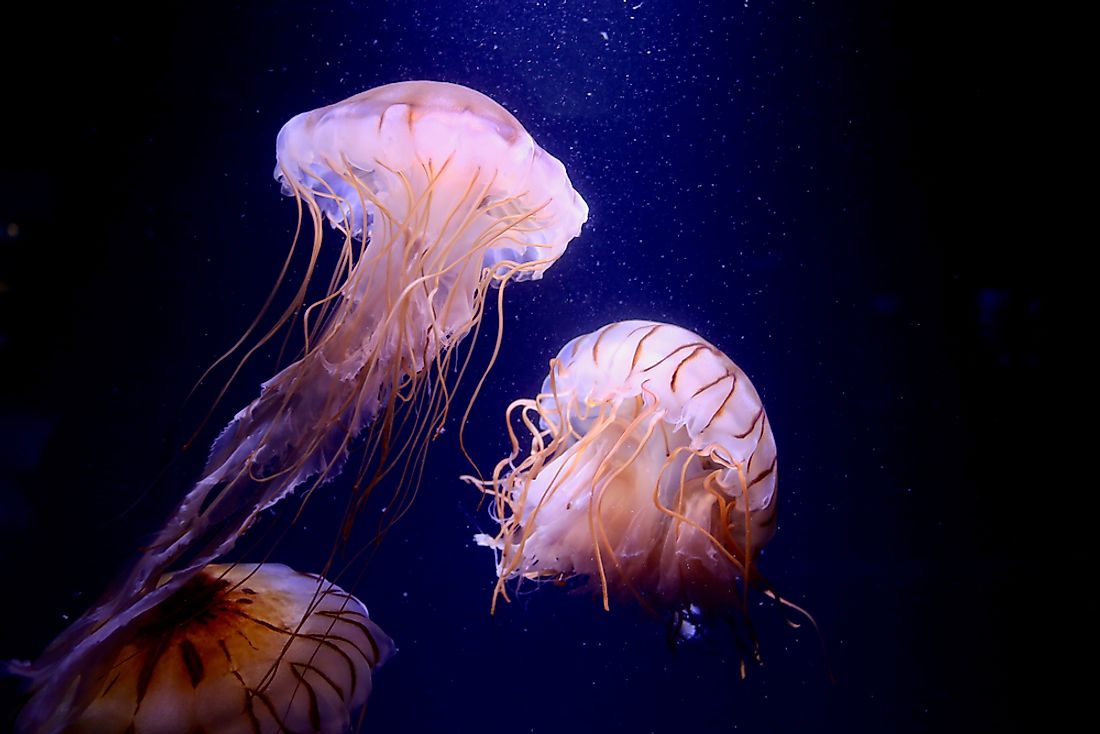What Does A jellyfish Ice-Cream Taste Like, And 8 Other Questions About Jellyfish

Scientists believe that jellyfish have inhabited Earth even before dinosaurs, as far as 500-700 million years ago. These primitive, yet fascinating creatures have adapted to living in the waters of oceans from the Arctic to tropics, and from the eternal-night depths to the sunny shallow swamps. Jellyfish have even been to space, helping scientists to figure out how we would adapt to the change in gravity. Both humans and jellies use calcium crystals to orient themselves. Since jellyfish lifecycle is so much shorter, and physiology is simpler, we get a more accessible insight into the impact of space.
9. Is Jellyfish A Fish?

Nope, they are not fish - the name is misleading. Jellyfish, or medusas, are invertebrates, animals that do not have a symmetry aligned along the backbone. Classifying the jellyfish in a straightforward taxonomy is a tricky task because of the enormous variety within the group. As a result, they are sometimes simply referred to as "a type of gelatinous zooplankton."
8. Do Jellyfish Have Eyes?
Most jellyfish catch their prey without having either brains or eyes, just by floating transparently through the sea until prey runs into their tentacles. But some jellyfish can perceive visual signals. The box jellyfish has the most complex system to sense optical signals among currently known: they have six eyes of four different types, 24 in total. Although our understanding of the visual capabilities of these animals is far from complete, we can at least say that box jellies appear to have a 360-degree view of its environment.
Those eyes do not appear to be able to perceive images the way our eyes do. But two of them are very sensitive to light differentiation and have cornea, lenses, and retinas, so at least some type of images is most likely formed. The other two types appear to specialize in light response, swimming navigation, and avoiding obstacles. Their eyes are bundled into four rhopalia structures located at the bottom of its bell, all around it, with at least one set always directed upwards.
7. Are Jellyfish Dangerous?

Jellyfish do not purposely attack humans. Most encounters happen when we touch them by accident or out of curiosity. Some species have to be observed from a very respectable distance: for example, Man'o'war's 30 meter long tentacles are almost invisible in the water. Many species have an excruciatingly painful sting. Some have venom that has the potential to kill a human or an animal. An allergic reaction is another danger. Here is how their sting works: since Jellyfish are not exactly the fastest swimmers, they rely on their sting to stun and paralyze their prey. Jellyfish have a unique type of "harpoon" cells that are called nematocysts: you can envision them as tiny capsules full of a toxin. When something comes in contact with a jellyfish tentacle, millions of nematocysts shoot out, penetrate the skin and inject venom.
6. What Is A Group Of Jellyfish Called?
Articles about the group of jellyfish being called smack pop up in the search, but we checked, and none of the scientists ever used this term. So it is probably a copy-paste. In scientific papers, a group of jellyfish is often called a bloom or a swarm. The term "swarm" usually implies a tendency to deliberately stay together, like, for example, Moon jellyfish groups. "Bloom" can refer to a local occurrence of large numbers of jellies, to seasonal number increases, or figures beyond what was expected. Jellyfish "bloom" can happen by nature of their life cycles when plankton supply increases.
5. Can We Eat Jellyfish?

Please do not attempt to grab a jellyfish from the water - you can get stung. And do not try to eat the jellyfish washed ashore, as they start to decompose almost immediately, and you might have to deal with a very nasty bacterial infection.
However, jellyfish might prove to be a valuable food source, especially from the sustainability point of view. Unlike all other creatures that suffer as the acidity of the ocean water increases, they seem to cope with it well. And, unlike fish, it is much harder to deplete their stocks.
Edible jellyfish species include Nomura's jellyfish (which tends to bloom, so can be a very plentiful source), Cannonball jellyfish (the live cannonball jellyfish contains toxins that can cause cardiac problems in animals!), Jelly blubber, Rhopilema esculentum and Rhopilema hispidium (the most common ones consumed in China, Japan and Korea), Acromitus maculosus, Catostylus tagi, and a few others.
Edible jellyfish is a seafood that is actively harvested and sold in several Asian and Southeast Asian countries: you can encounter jellyfish salad in some Asian airline meals. The taste is reported to have a delicate, chewy texture and slightly salty taste, sometimes said to be reminiscent of oysters. There it is mostly produced into a salted and dried product that is rehydrated before consumption. The bell is usually the part eaten. A Japanese company produces an ice-cream with vanilla and Nomura's jellyfish. There is also a way to make crunchy jellyfish chips.
4. Is It Fun To Have A Pet Jellyfish?
Jellies can be a meditative pet. What do they do as pets? They float. They look beautiful. They eat. That is pretty much it. Most popular pets are moon jellyfish: if adequately cared for, they live from a few months to a year. Jellyfish, in general, are very delicate creatures, exceedingly susceptible to damage. Jellies die in fresh water, so the specific salt content and ph of their water will have to be maintained. The water must have a particular ammonia level and the nitrogen cycle. You will have to pay attention to what and how much you feed the jellies; typically, you would breed tiny brine shrimp for them to eat.
While a jellyfish itself is not that expensive, starting with $25 for a common species, the equipment is costly. Jellies need a special tank designed with rounded corners so that the gelatinous floaters do not get trapped or damaged. The tank is also designed to maintain the constant water flow; otherwise, the jellyfish won't be able to swim and will just hang at the bottom. Most tanks have features like led lights so that the jellyfish could be more visible. The price of the tank depends upon the size but starts typically from around $300.
3. Why Do Box Jellies Need Eyes, Even Though Most Others Do Not?

Unlike most other jellyfish that live in the open sea, box jellyfish inhabits shallow mangrove swamps where they need to avoid many obstacles. It also hunts during the day and needs to distinguish between their pray and roots and leaves. An experiment also confirmed that these jellies tend to prefer the waters under the canopy of the trees. If they are washed out of the shaded waters into the open ones, they identify it and attempt to return. They also have quite unusual (for jellies) mating practice that requires precision rather than just release of the reproductive cells.
2. Do Jellyfish Have ''Pets''?
They are not pets, but some jellyfish do form a symbiosis with other creatures. Cassiopea, commonly called "upside-down jellyfish," is found in warmer coastal regions around the world, mainly in shallow waters. The medusa has a symbiotic relationship with photosynthetic algae inhabiting its tentacles. By lying upside-down on the bottom, they maximize the tentacles' exposure to the sunlight, which the algae need to remain productive. It is almost as if the jellyfish has its own little farm of nutrients. The upside-down jellyfish also often hosts tiny prawns, offering them a protective shelter in return for cleaning it from parasites.
Some other species cooperate with small fish who have immunity and live among the tentacles. Small fish are safe from potential predators and can pick on the remains of the fish caught by the jellyfish, while, most likely, serving as bait to lure the bigger fish into the trap. The cannonball jellyfish, for example, can have a symbiotic relationship with up to ten different fish species.
1. Do Jellyfish Have Brains Or Hearts?

Jellyfish do not have a heart or a brain as we know them: even more, they do not have blood that needs to be pumped. They are 98% water, and their thin, gelatinous bodies can get oxygenated directly by diffusion. Jellies have a simple nervous system, although the level of its advancement varies from the most primitive network of surface nerves to more complex structures called rhopalia (box jellyfish).











